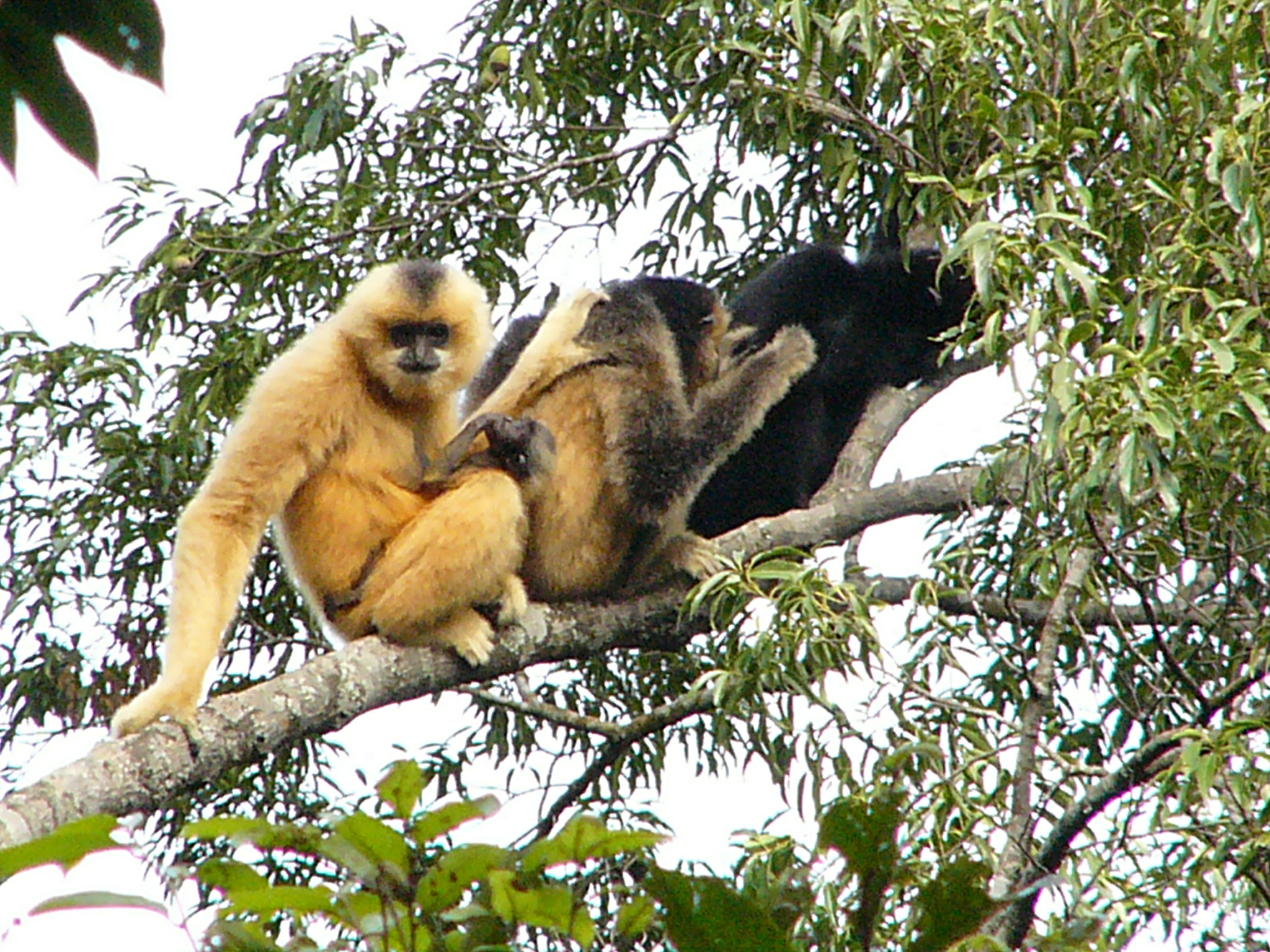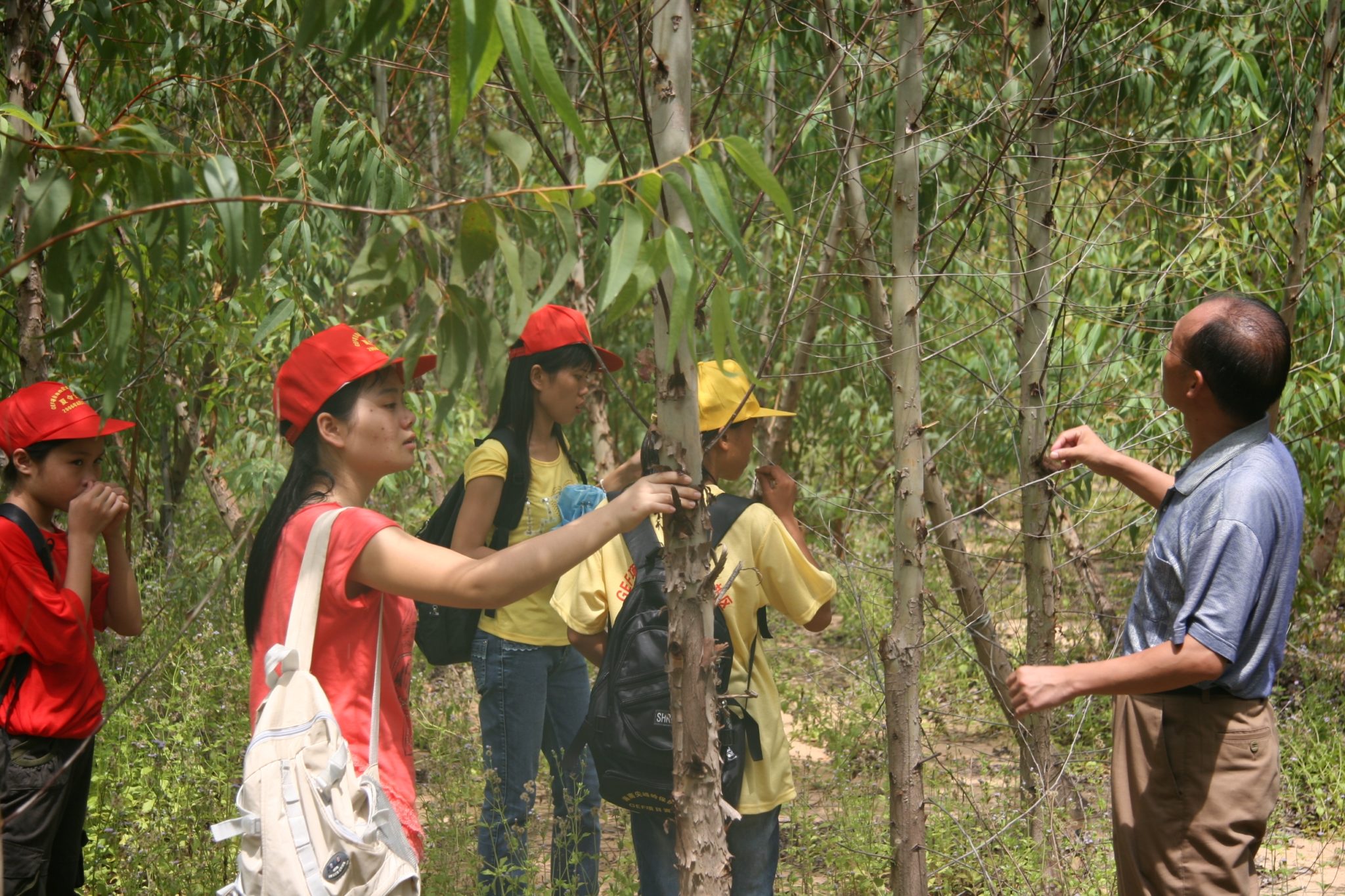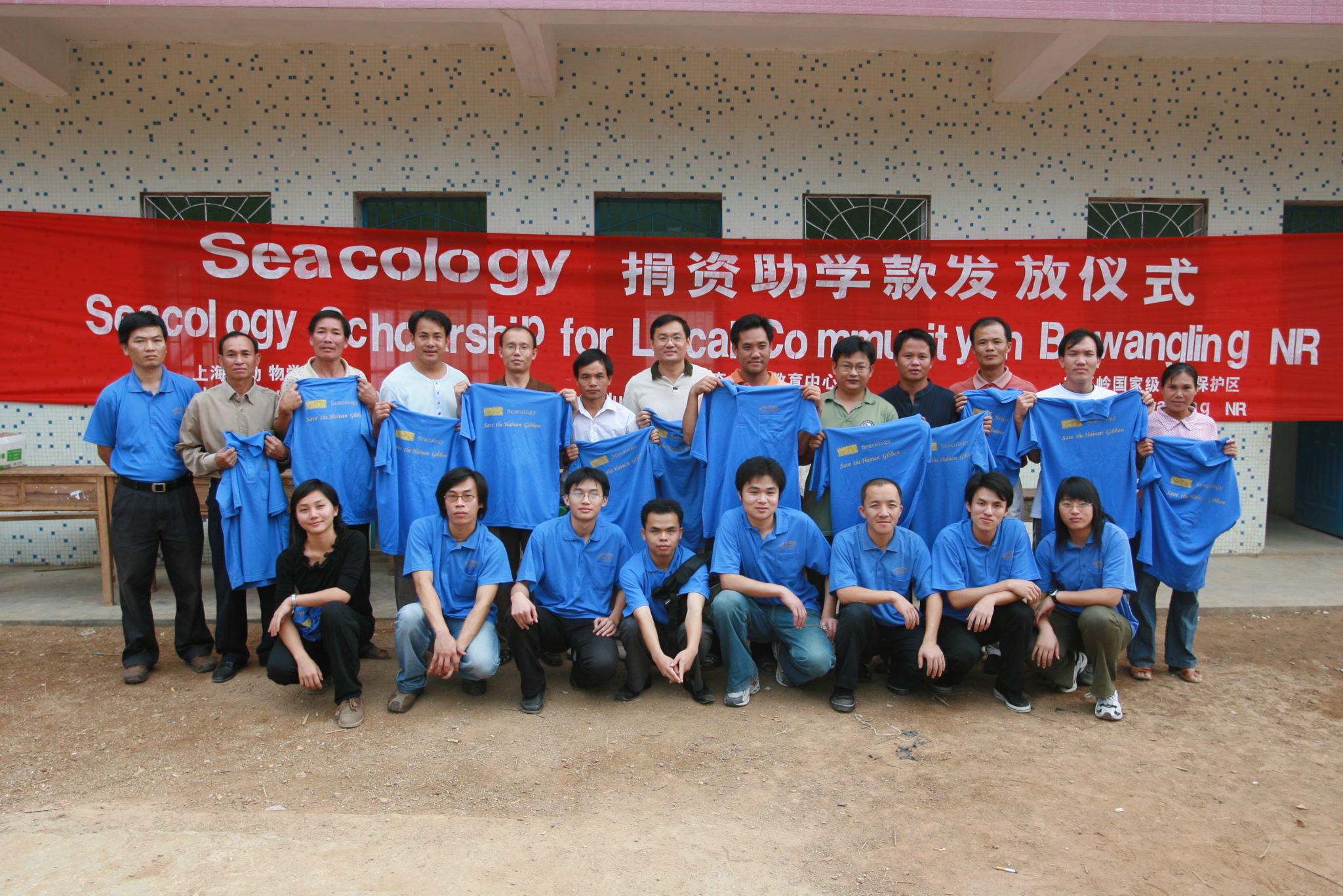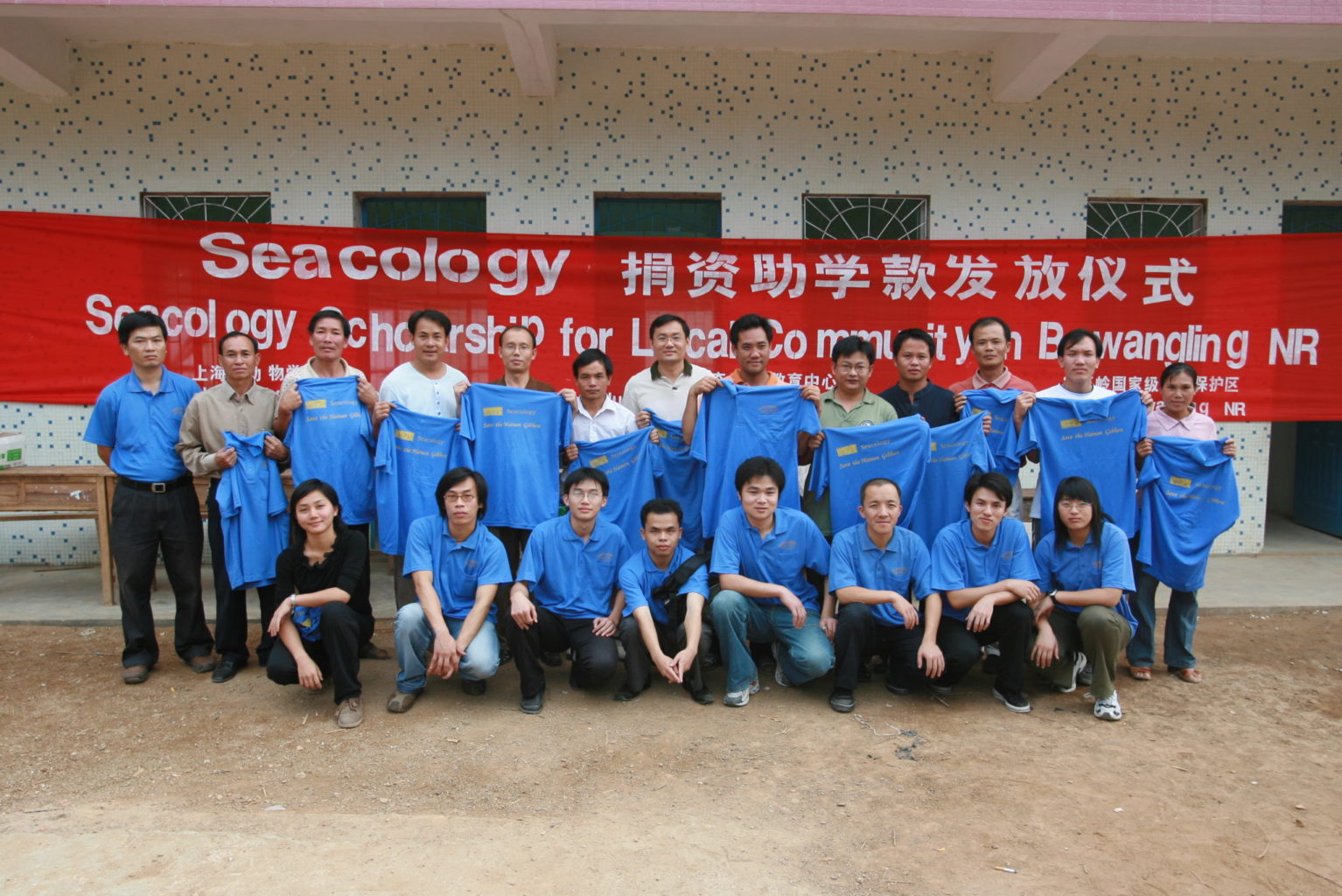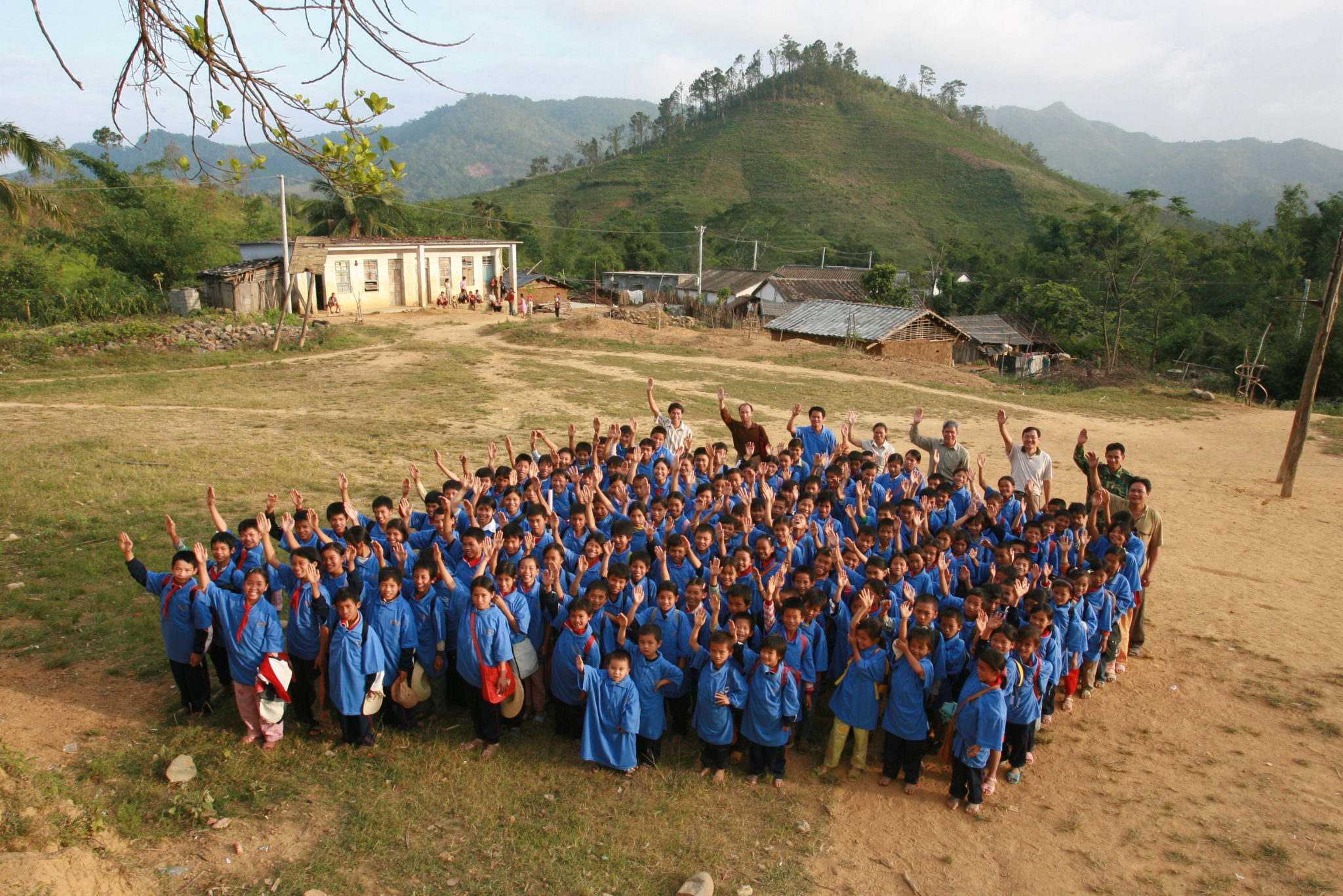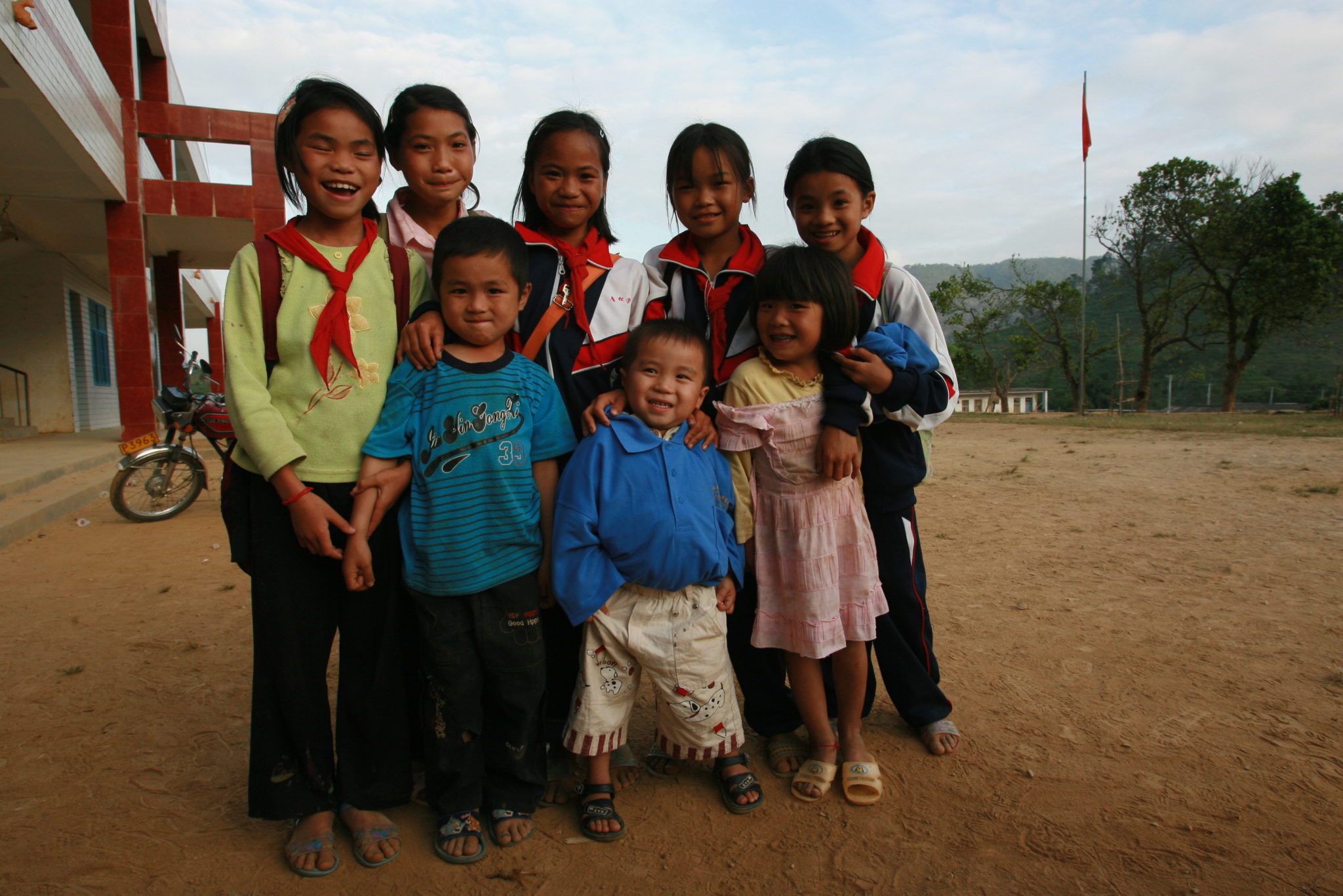One of the world’s most endangered primates is the Hainan gibbon. There are only 19 individuals remaining, all in Bawangling Reserve on Hainan Island off the south coast of China.
There are four villages close to the reserve. The residents are poor Miao and Li minority tribes people, who have been cutting down trees in the reserve. The families in the villages have 200 children aged 8 to 13, but cannot afford to send them to primary school.
Seacology, working with the Zoological Society of Shanghai and the Zoological Society of Paris, will fund scholarships for all 200 children. The villagers have agreed to forgo nonsustainable exploitation of the reserve. Instead, they will pursue alternatives such as bee farming, producing handicrafts, and growing medicinal herbs.


